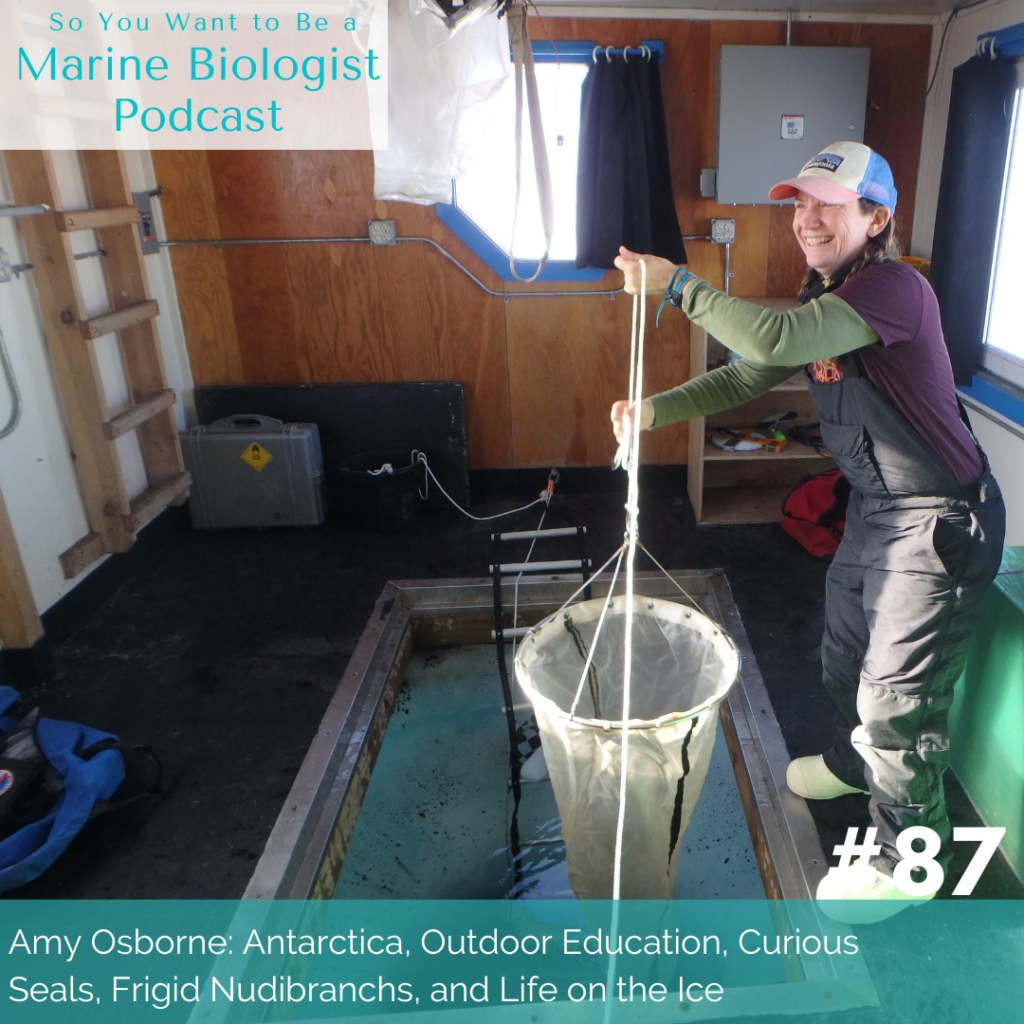Outdoor environmental educator Amy Osborne joins us on the show today. Starting her career as a rowing coach, Amy discovered her passion for teaching- and particularly teaching the outdoors- a little bit later in life. This led her to the shores of the Chesapeake Bay, Wyoming, and California. It also gave her the opportunity with PolarTrec to conduct research at McMurdo Research Station in Antarctica, something we chat about quite a bit today. Amy shares what life on the ice is like, how this opportunity came about, and the importance of connecting with your place.
Photo credits: Amy Osborne pulls up the plankton tow net from a hole in the ice inside the Jetty Hut. McMurdo Sound, Antarctica. Photo by Denise Hardoy (PolarTREC 2019), Courtesy of ARCUS
Connect with Amy: Facebook
Quick links
Polar TREC expedition – Teachers and Researchers Exploring and Collaborating
Polar TREC expedition- Amy’s Journals
Amy Osborne adventures
McMurdo Research Station
Sea stars
Sea urchins
Sea spiders
Nudibranchs
Seals
Pteropods
Copepods
Ectotherms
Nudibranch Eggs
Sea Spider Eggs
Environmental Education
Polar Gigantism in Antarctica
Thermal Sensitivity of Embryos and Larvae of Antarctic Marine Ectotherms
Octopus
Sea otter
Orca
Zooplankton
Show notes
0 :17 After a broken plane windshield caused her antarctica flight to boomerang back to new Zealand, Amy eventually made it to the Antarctic where started her trip of a lifetime.
2 :16 From a dream on a piece of paper to doing marine research in Antarctica, Amy was lucky enough to check some ticks off of her bucket list when she got the opportunity to take part in a Polar TREC expedition at McMurdo Research Station.
5 : 25 Amy shares what the preparation was like before setting off to Antarctica, how her research topic was chosen, and the various skills she had to learn to stay safe in the Arctic region.
9 : 58 Life on the ice was like living in a little village. Amy talks about all of the jobs that people have at the McMurdo Research station, what her day to day was like, her role in the research she did, and the amazing facilities that you wouldn’t think of in Antarctica.
14 :16 During her time doing marine research, Amy shares the various creatures she saw, the studies that she was interested in, and the incredible biodiversity that exists under the Antarctic ice.
19 :05 Ever wondered what it sounds like in Antarctica? Complete silence, with the occasional noise of crackling ice.
20 :26 Seals were a common sighing for Amy, especially one in particular that would come right up to her site and liked to blow its nose on the surface.
22 : 20 Amy and her coworker’s curiosity got them wondering what they could find in the water column so they grabbed some plankton nets to see what they could find. The result? Some pteropods and mostly copepods.
25 : 08 Even after a morning of helping out with field work, Amy would bring back samples collected and went to work in a wet lab. She discusses the work she did in the lab to learn more about sea spider and nudibranch eggs and their development.
33 : 41 Amy talks about her career as a teacher and how she got interested to work in outdoor environmental education.
42 : 53 Amy explains what play space education is and why she is passionate about helping students connect with their environment.
46 : 06 Although there are no final results of the work she conducted in Antarctica, she shares some more questions that are yet to be answered.
50 : 14 Some of Amy’s favorite sea creatures include the octopus, sea otters, orcas, pteropods, nudibranchs, and zooplankton.
50 : 54 What does the ocean mean to Amy? Adventure, mystery, and connection.
51 : 24 If Amy had a blank cheque for a project, she would create a watershed project to connect people to water and to each other.
52 : 58 Amy’s feel good field story of when one of her students was overjoyed to see the Pacific Ocean is the reason she loves what she does.
54 : 46 Amy’s conservation ask- Get outside, get curious, and connect with where you are!
55 : 27 Connect with Amy!
